What are Electric Mountain Bikes
Electric mountain bikes, commonly known as e-MTBs, are advanced bicycles designed for off-road cycling that incorporate electrical drive systems to assist riders. These bikes blend the rugged capabilities of traditional mountain bikes with the added boost of an electric motor, making them suitable for a wide range of users, from outdoor enthusiasts to those seeking a sustainable commuting alternative over varied terrains.
The core principle behind an electric mountain bike is simple: it uses a battery-powered motor to augment the rider's pedaling effort. This can make climbing steep hills easier, increase acceleration, and allow riders to maintain higher speeds with less fatigue. The motor typically activates based on the rider's pedaling force, offering varying levels of assistance as needed. This feature is particularly beneficial for those who love mountain biking but may not have the stamina or physical ability to tackle demanding trails unassisted.
Electric mountain bikes are equipped with controls that allow the rider to adjust the level of assistance from the motor. They usually feature a display that provides information on battery life, distance traveled, speed, and the selected power mode. The batteries on these bikes are rechargeable, and advances in technology have seen significant improvements in their lifespan and performance.
Designed for both recreational and practical purposes, electric mountain bikes are ideal for those looking to explore rough terrains without overexerting themselves. They also serve as an excellent option for commuters who face hilly or challenging routes. With robust construction and specialized components such as suspension forks, durable tires, and powerful brakes, electric mountain bikes are well-suited for handling the obstacles of off-road trails while providing a comfortable ride.
Types of Electric Mountain Bikes
Electric mountain bikes come in various styles and configurations to cater to different riding preferences and terrains. Here are some common types:
Hardtail Electric Mountain Bikes: These bikes feature a suspension fork at the front but no rear suspension. They are lighter and generally more affordable than full-suspension e-MTBs. Hardtail e-MTBs are well-suited for less technical trails and cross-country riding.
Full-Suspension Electric Mountain Bikes: Offering both front and rear suspension, these bikes provide superior comfort and traction over rough terrain. They are preferred by riders who tackle more challenging trails that demand greater shock absorption.
Fat Tire Electric Mountain Bikes: Equipped with wide tires for additional stability and grip, fat tire e-MTBs excel in environments where terrain can be unpredictable – such as sand, mud, or snow.
Cross-Country (XC) Electric Mountain Bikes: These are designed for efficiency and speed over long distances. They have moderate suspension travel and are typically lighter than other e-MTBs, making them suitable for endurance events or fast trail riding.
All-Mountain (Enduro) Electric Mountain Bikes: Built to handle a mix of climbing and descending on technical terrain, these e-MTBs have more suspension travel than XC models and often feature more robust frames and components.
Downhill Electric Mountain Bikes: These are designed specifically for descending steep and technical terrain at high speeds. They have the most suspension travel of all e-MTB types and are optimized for performance over jumps, drops, and rocky sections.
How to Choose an Electric Mountain Bike
When selecting an electric mountain bike for business purposes – whether for commercial use or resale – several factors should be taken into account:
Frame Material: The frame material affects the bike's weight, durability, and cost. Options such as aluminum alloy offer a good balance between weight and strength at a reasonable price point.
Braking System: Reliable brakes are essential for safety on varied terrains. Disc brakes are common due to their powerful stopping ability in all weather conditions.
Power Supply: The type of battery used will impact the bike's range and weight. Lithium batteries are popular due to their light weight and high capacity.
Motor Position: The placement of the motor (rear hub, central, or front hub) influences the bike's balance and handling characteristics.
Battery Position: The position of the battery can affect the bike's center of gravity; options include down tube-mounted or integrated into the frame.
Gears: The number of gears will determine how easily riders can adapt to different slopes and trail conditions.
Wheel Size: Different wheel sizes offer trade-offs between maneuverability (smaller wheels) and obstacle rollover capability (larger wheels).
Torque: Higher torque motors provide more powerful assistance which can be crucial for steep uphill segments.
Range per Power: Consider the intended use when looking at range specifications; longer ranges may be required for extended rides or commercial operations.
Smart Features: Some e-MTBs come with digital displays, Bluetooth connectivity, or sensor technologies that can enhance the riding experience or provide valuable data analytics for businesses.
Businesses should consider their target market's needs when choosing electric mountain bikes to ensure they cater to their customers' requirements effectively.
Best Electric Mountain Bike on Alibaba.com
Alibaba.com stands out as an exceptional marketplace offering a diverse range of electric mountain bikes suited for various business needs. With an extensive collection sourced from numerous suppliers worldwide, businesses can find electric mountain bikes that align with their specific requirements regarding design, technology, performance capabilities, and price points.
The platform is designed to facilitate seamless transactions between buyers and suppliers by providing a reliable space where detailed product information is readily available. This transparency ensures that businesses can make informed decisions when sourcing products for commercial use or resale. Moreover, Alibaba.com's Trade Assurance service adds an extra layer of protection by ensuring payments are secure until delivery is completed—a testament to Alibaba.com's commitment to fostering trust within its global trading community.
By choosing Alibaba.com as their source for electric mountain bikes, businesses benefit from the platform's international reach and comprehensive support services. Whether a company is looking to expand its inventory with state-of-the-art e-MTBs or seeking customizable options to meet unique customer demands, Alibaba.com provides a streamlined solution that supports businesses in scaling up their operations efficiently while tapping into new market opportunities across different regions.
Common FAQs for Electric Mountain Bike
What is the average battery life of an electric mountain bike?
The battery life of an electric mountain bike can vary significantly based on usage and battery capacity, but on average, a fully charged lithium battery can last between 20 to 70 kilometers per charge, depending on the level of assistance used, terrain, and rider weight.
How does the motor position affect the performance of an electric mountain bike?
The motor position can impact the handling and weight distribution of an electric mountain bike. A central motor offers better balance and a natural riding feel, while a rear hub motor provides strong acceleration. A front hub motor is less common and can affect steering and traction.
Are there electric mountain bikes without pedal assist?
Most electric mountain bikes are designed with pedal assist to provide a natural cycling experience. However, some models come equipped with a throttle that allows for motor-powered riding without pedaling.
Can the level of assistance on an electric mountain bike be adjusted?
Yes, riders can adjust the level of assistance provided by the electric motor, typically through a control unit mounted on the handlebars, allowing for a customizable riding experience based on the terrain and rider preference.
What factors determine the torque needed in an electric mountain bike?
The required torque for an electric mountain bike depends on the terrain it will be used on and the rider's preference for acceleration. Higher torque is beneficial for steep climbs and off-road conditions where extra power is needed.
Are there specific regulations regarding the use of electric mountain bikes?
Regulations for electric mountain bikes can vary by region and might include restrictions on motor power, speed limits, and where they can be used (e.g., certain trails or parks). Businesses should check local laws to ensure compliance.
What are the maintenance requirements for an electric mountain bike?
Electric mountain bikes require regular maintenance similar to traditional bikes, such as checking tire pressure, brake pads, and gear function. Additionally, electrical components like the battery, motor, and display should be inspected periodically for optimal performance.
How do different braking systems compare on electric mountain bikes?
Disc brakes are generally preferred for their superior stopping power in various weather conditions, while V brakes are simpler and lighter but may offer less stopping force. The choice depends on the intended use and customer preference.
What is the significance of wheel size in choosing an electric mountain bike?
Wheel size affects maneuverability and obstacle clearance. Smaller wheels (e.g., 20-24 inches) offer better handling in tight spaces, while larger wheels (e.g., 26-29 inches) provide smoother rides over rough terrain.
How important is frame material when selecting an electric mountain bike for resale?
Frame material determines weight, strength, durability, and cost. It plays a significant role in a bike's overall performance and appeal to customers. Bikes with lightweight materials like carbon fiber or aluminum alloy may be more attractive to certain market segments.
Can electric mountain bikes be ridden in wet conditions?
Most electric mountain bikes are designed to withstand typical outdoor conditions, including wet weather. However, it's important to properly maintain and occasionally inspect electrical components to ensure they remain safe and functional after exposure to moisture.
What should businesses consider when determining the range per power needed for their electric mountain bikes?
Businesses should consider their target audience's typical ride length and terrain when determining range per power. Longer ranges may be necessary for extended rides or areas with fewer charging opportunities.
Are there customizable options for businesses purchasing electric mountain bikes in bulk?
Yes, some suppliers may offer customizable options such as color choices, logo branding, or specific component selections when purchasing in bulk. This allows businesses to tailor products to their branding or customer preferences.
How do smart features enhance the value of an electric mountain bike in a business context?
Smart features like digital displays or Bluetooth connectivity can offer riders useful information about their ride or allow for integration with smartphones. These enhancements can make products more appealing to tech-savvy consumers and add value to business offerings.
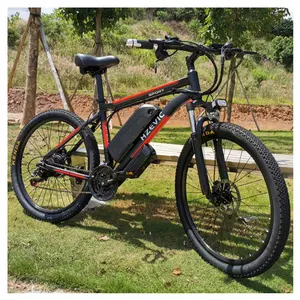






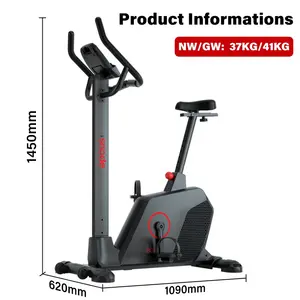




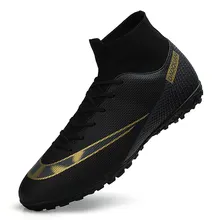
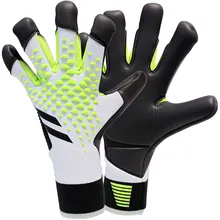





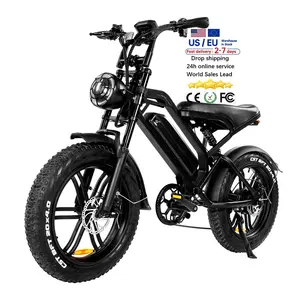
























 浙公网安备 33010002000092号
浙公网安备 33010002000092号 浙B2-20120091-4
浙B2-20120091-4